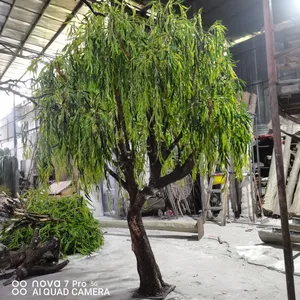Kitchens Trees: A Unique Decorative Touch
Kitchens trees are an innovative and charming way to enhance your culinary space. These decorative pieces add a whimsical element to your kitchen, transforming the environment into a culinary haven. Beyond merely being decorative, kitchen trees can also serve practical purposes, making them a versatile addition to any kitchen style. With their range of designs and materials, kitchen trees cater to various tastes, combining functionality with aesthetic appeal.
Types of Kitchen Trees
Kitchen trees come in several varieties, each tailored to meet specific needs and preferences. Here are some of the popular types:
- Wall-Mounted Kitchen Trees: Ideal for saving counter space, these trees can be hung on walls, providing easy access to your cooking essentials, herbs, or spices.
- Countertop Kitchen Trees: These freestanding designs are perfect for organizing kitchen tools, displaying utensils, or presenting fruits in a visually appealing manner.
- Hanging Kitchen Trees: Suspended models that can hold pots or ingredients; these not only clear counters but also add a touch of elegance by showcasing your culinary items.
- Decorative Kitchen Trees: Primarily used for aesthetic purposes, these trees can feature lights or custom ornaments, making your kitchen feel festive and personalized.
Function and Feature of Kitchen Trees
Kitchen trees serve multiple functions and possess features that make them a valuable asset in any kitchen:
- Organization: They provide an effective solution for decluttering surfaces, helping you store everything from utensils to fresh produce neatly.
- Space-Saving: With various designs catering to wall or hanging fixtures, they optimize space in small kitchens.
- Aesthetics: Kitchen trees often come in artistic designs that will enhance the overall look of your kitchen, providing a decorative element that complements the cooking area.
- Accessibility: These trees can be designed to provide easy reach to cooking essentials, reducing the time spent searching for items.
Materials Used in Kitchen Trees
The materials used in kitchen trees not only influence their durability but also their visual appeal. Here are some common materials you can find:
- Wood: A classic choice, wooden kitchen trees offer warmth and rustic charm, available in various finishes to match your kitchen decor.
- Metal: Many kitchen trees are constructed from stainless steel or wrought iron, providing a sleek, modern look, as well as durability and resistance to corrosion.
- Plastic: Lightweight and often colorful, plastic kitchen trees are functional and perfect for those looking for budget-friendly options.
- Ceramic: For decorative kitchen trees, ceramics provide a unique and artistic flair, often displaying intricate designs and glazes that can enhance your kitchen's aesthetics.
Advantages of Using Kitchen Trees
Incorporating kitchen trees into your cooking space brings various benefits:
- Enhanced Organization: By providing dedicated spaces for herbs, utensils, and other cooking items, kitchen trees aid in keeping everything orderly.
- Improved Efficiency: Easy access to your cooking essentials enables you to work faster and with reduced frustration.
- Personalization: With so many designs available, kitchen trees allow you to express your personal style, matching the character of your kitchen perfectly.
- Space Optimization: Perfect for small or compact kitchens, these trees maximize your space without sacrificing style or utility.
















































